L&FP, 62: The Systems (and Systems Engineering) Perspective — a first step to understanding design in/of our world
Our frame going forward, is knowledge reformation driven by application of the adapted JoHari Window, given obvious, fallacy-riddled ideological captivity of the intellectual high ground of our civilisation:
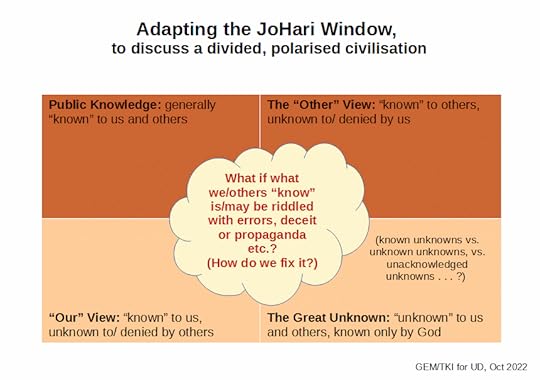
Ideological captivity of the high ground also calls forth the perspective that we need to map the high ground:
[image error]If you want some context on validity:

So, we are now looking at ideologically driven captivity of the intellectual high ground and related institutions of our civilisation, leading to compromising the integrity of the knowledge commons through fallacy riddled evolutionary materialistic scientism and related ideologies. Not a happy thought but that is what we have to deal with and find a better way forward.
We already know, knowledge (weak, everyday sense) is warranted, credibly true (so, reliable) belief, and that it is defeasible on finding gaps or errors that force reworking. Classically, that happened twice with Physics, the shattering of the Scholastic view through the Scientific revolution, and the modern physics revolution that showed limitations of newtonian dynamics and classical electromagnetism. Physics, like Humpty Dumpty [and the underlying fallen Roman Empire], has never been put back together again.
But, how do we proceed?
Through systems thinking and systems engineering, on several levels.
First, NASA defines:
“systems engineering” is defined as a methodical, multi-disciplinary approach for the design, realization, technical management, operations, and retirement of a system. A “system” is the combination of elements that function together to produce the capability required to meet a need. The elements include all hardware, software, equipment, facilities, personnel [–> thus, these are sociotechnical systems and bridge engineering and management], processes, and procedures needed for this purpose; that is, all things required to produce system-level results. The results include system-level qualities, properties, characteristics, functions, behavior, and performance. The value added by the system as a whole, beyond that contributed independently by the parts, is primarily created by the relationship among the parts; that is, how they are interconnected. [–> functional, information rich organisation adds value] It is a way of looking at the “big picture” when making technical decisions. It is a way of achieving stakeholder functional, physical, and operational performance requirements in the intended use environment over the planned life of the system within cost, schedule, and other constraints. It is a methodology that supports the containment of the life cycle cost of a system. In other words, systems engineering is a logical way of thinking.
Systems engineering is the art and science of developing an operable system capable of meeting requirements within often opposed constraints. Systems engineering is a holistic, integrative discipline
NASA has a big scoping chart for Systems Engineering in a project/programme management context:

We can look at the Systems Engineering Vee Model (HT: ResearchGate):

Another view, notice, the implied, layer cake modularity of systems, from physical materials to base devices and components [consider a transistor or a bolt], to function units, to system modules and organisation to overall functionality based on information rich organisation:

In that context, we can bring on board issues of systems architecture and related matters, as I commented earlier today:
 An Analogue Computer network with two chained integrators
An Analogue Computer network with two chained integratorsComputer architecture at first level, is the study of the assembly/machine language view, i.e. information, its processing [including coding, algorithmic processes etc], associated function units, their organisation. Underlying physical science and technique to effect these units carries us to the layer cake, modular network, systems view. With analogue computers, the focus is on continuous state function units and how they represent key mathematical operations [famously, integration] that then integrate in a process flow network to handle continuous state information bearing signals and materials or states and phases of dynamic stochastic entities etc. This extends the context to instrumentation, control and systems engineering as well as telecommunications, bringing in frequency domain transforms and approaches as well as state/phase space approaches. These give us fresh eyes to see and more objectively understand the molecular nanotech marvels in the cell.
Obviously, this immediately allows us to reconsider the cell as a marvel of nanotechnology, e.g. here is its metabolic framework, part of how it is a metabolising, molecular nanotech self replicating automaton:
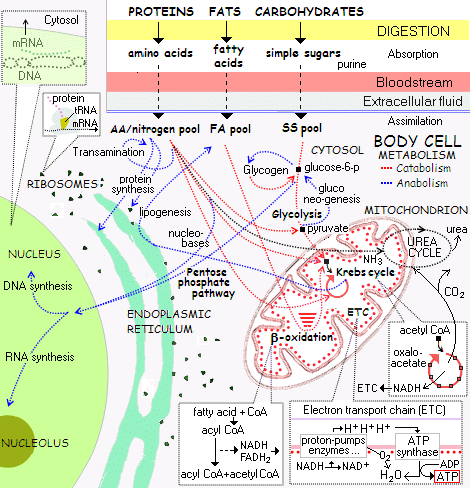
Just the top left corner, already involves a complex algorithmic process using coded information:
 Protein Synthesis (HT: Wiki Media)
Protein Synthesis (HT: Wiki Media)Then, there is the communication network this expresses, as Yockey pointed out:
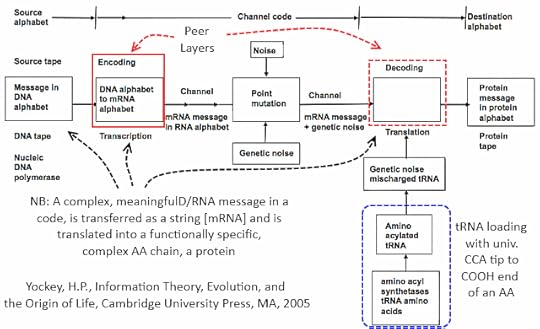 Yockey’s analysis of protein synthesis as a code-based communication process
Yockey’s analysis of protein synthesis as a code-based communication processAll of this, we have known for decades, but now it is time to independently ponder it as a system and understand how this exemplifies and instantiates such system elements. We can immediately set aside crude fallacies of appeals to dismissible analogies, once we ponder, say, the genetic code as just that, a code:
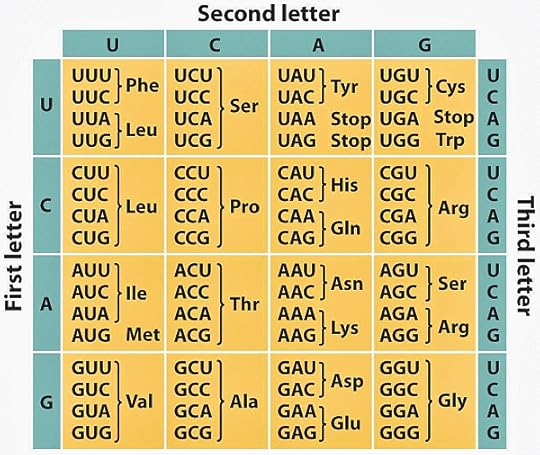 The Genetic code uses three-letter codons to specify the sequence of AA’s in proteins and specifying start/stop, and using six bits per AA
The Genetic code uses three-letter codons to specify the sequence of AA’s in proteins and specifying start/stop, and using six bits per AAJust for reference, by fair use doctrine, here is Lehninger’s comparison:
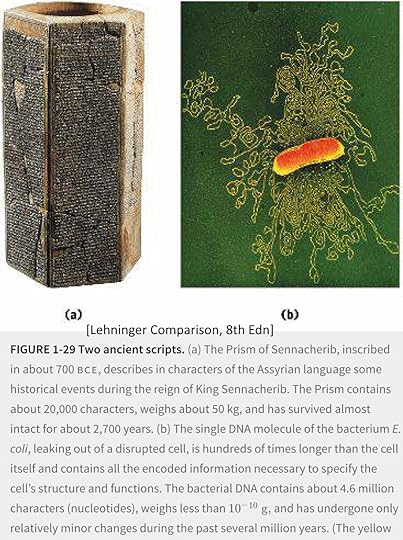
By starting from a systems perspective, we can then rebuild knowledge on a sounder footing than the present ideologically driven institutional capture. END
Copyright © 2022 Uncommon Descent . This Feed is for personal non-commercial use only. If you are not reading this material in your news aggregator, the site you are looking at is guilty of copyright infringement UNLESS EXPLICIT PERMISSION OTHERWISE HAS BEEN GIVEN. Please contact legal@uncommondescent.com so we can take legal action immediately.Plugin by Taragana
Michael J. Behe's Blog
- Michael J. Behe's profile
- 219 followers



